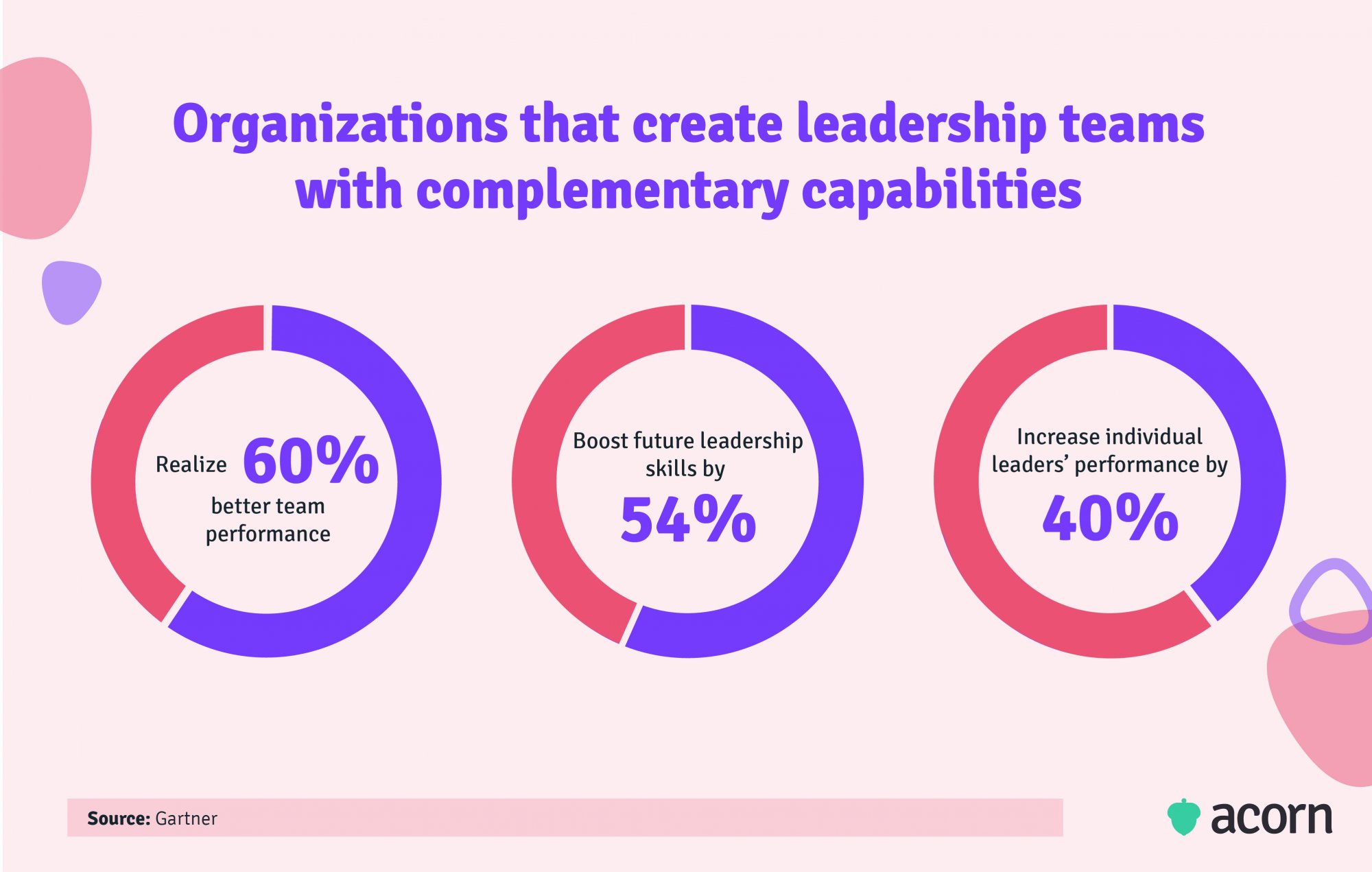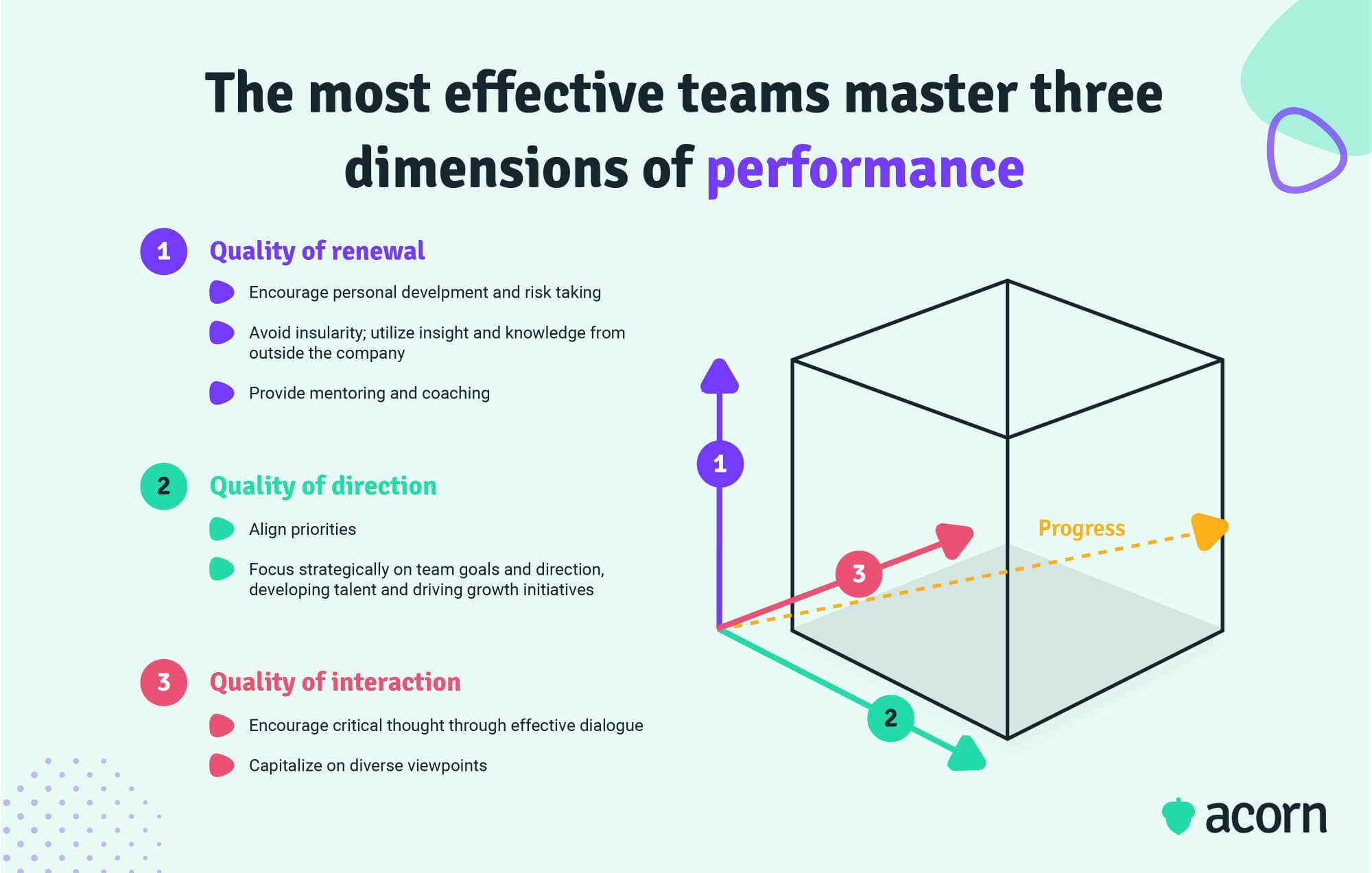How to Get Senior Leadership Team Development Right (And Why Most Organisations Get It Wrong)
Reading Time:

Lead the pack with the latest in strategic L&D every month— straight to your inbox.
SubscribeLeadership team development can play a major role in ensuring efficiency and resilience within your company—given the right framework.
Leadership teams are an interesting concept. As a collection of high-achieving, hardworking and highly influential employees, they aren’t naturally given to working in harmony.
Often, it’s because organisations don’t offer the resources or environment in which those teams can thrive. Getting leadership team development right, let alone providing it at all, is key to keeping your organisation strategically aligned and successfully performing.
So, how do you get it right? How can you avoid ineffective leadership team development? To answer these questions, we have to start at the beginning and discuss why your executive bench is important, and the factors tripping them up.
What is leadership team development?
Let’s start by defining the leadership team, shall we?
The leadership team is typically a group of senior leaders or executives who act as the strategic think tank for an organisation, with the CEO leading the charge. They are responsible for collectively setting and executing strategy, as well as amplifying culture.
Leadership team development focuses on enhancing team collaboration and the effectiveness of your designated executive team.
Leadership training vs leadership team development
These are two similar but ultimately different processes.
- Leadership training is generally focused on an individual’s leadership development. Think of an individual contributor learning leadership skills for their own career progression.
- Leadership team development centres on team building and strategic alignment for the sake of the organisation.
We pioneered the performance learning management system (PLMS) to help organisations create impact players out of their leaders. It’s the only solution designed to guide learners to master the capabilities (aka skills, knowledge, behaviours, tools, and processes) of their roles. Performance-oriented learning gives you tangible evidence of behaviour change and impact, transforming your organisation into a high performer in market.

Why do senior leadership teams fail?
At their core, leadership teams fail because of prevailing poor behaviours. Most executives and senior leaders have climbed through the ranks of a functional silo, and are used to defending their parcel of organisational turf. Looking at broad strategic issues over individual interests is a leap that is too big for many to make unguided.
An insular approach to leadership in your organisation can manifest as some detrimental behaviours in the executive team.
- Lowered appetite for risk. The systems and processes in place to support or block calculated risks will directly impact the risk/effort/reward mentality of leaders (and by extension, the teams who action their strategic directives).
- Poor communication. Simply put, some senior teams just don’t know how to engage in open dialogue with one another.
- Decentralised knowledge systems. This only emphasises conflicting views of organisational priorities, and pits functions against one another with differing origins of knowledge and ideas of optimisation and efficiency.
- Deficient individual development. Training shouldn’t stop once leaders reach a certain career level, especially not as the dynamics become more complex and critical.
- Lack of succession plans. People leave organisations every day—but that doesn’t mean that their successor can immediately sustain the relationships their predecessor built. It can also see crucial capability gaps going unfulfilled if someone does leave.
The impacts of misaligned leadership teams
It’s in the question: Misalignment. Leaders, executive team aside, are stewards of strategy. They’re also the critical touch point between strategy ideation and execution, translating business speak into employee tasks. In layman’s terms, leaders amplify positive and negative ways of work.
That means that any cracks in their dynamic will be recreated down the line in the organisation. 67% of strategic initiatives fail because of long-term effects like:
- Inconsistent instructions and conflicting priorities across functions
- Incongruent interpretations of strategy during execution
- Inability to capitalise on diverse perspectives
- Knowledge and talent hoarding within functions
- Surface level communication that avoids conflict
- Individual executives with tunnel vision who make decisions for their own interests first
- Cultural and rewards systems that perpetuate siloed business activities
- Differing internal messaging.
How to ensure effective leadership team development
There is a flawed perception that if you have a visionary CEO, the cohesion of your leadership levels is not as necessary as ensuring those leaders are perpetuating the CEO’s vision through their respective functions.
But you can’t just label a group of leaders a team and expect results. Harvard Business Review research suggests that undisciplined language around the leadership team leads to undisciplined action—aka, performance issues.
That is, in order to achieve their full performance potential, you need to have a disciplined understanding of what team performance should look like. Which brings us to leadership team development.
Build the case for an executive team
Creating effective leadership teams requires the right conditions. That includes getting buy-in from team members, for which there needs to be adequate reason for their participation.
Consider this step like building a business case or purpose. You need something, usually a future results-based goal, around which your senior team can organise themselves in order to disentangle themselves from their individual responsibilities.
Organisational challenges will be at the heart of this, both internal and external. These are initiatives that only the executive team can address. That’s challenges (or opportunities) like:
- Upcoming mergers or acquisitions
- Competitive threats
- Emerging leadership levels, such as middle managers.
Consistently assess leadership alignment
…With each other and with strategic direction. Where we looked at the bigger picture with your environmental scan, now’s the time to do a pulse check.
Don’t assume that senior team leaders share a common understanding of organisational goals and how to execute them. Instead, utilise the potential gaps as a starting point for training and team building.
Kick-off meetings, individual interviews or surveys are good to ask questions like:
- What do you believe are the organisation’s top priorities?
- How well do business functions currently work together?
- What is the purpose of the leadership team?
The idea is pinpoint where individual team members stand and, where differences emerge, collectively realign them on performance goals.
Remember that the main goal of any leadership team development is to become a high-performing team. It can easy to focus on technical output—but when it comes to developing successful teams, you need to instigate behavioural change.

Utilise external training providers
Given time, an offsite team building course can be helpful. But it’s not always viable or impactful in terms of achieving behavioural improvements.
Facilitators and coaches are great impartial resources for ongoing team development. Say the team meets every other week to discuss priorities—a facilitator could be engaged to attend every session and act as moderator. They also help to minimise external intrusions on the team’s directives.
The main point is that any training they undertake is team-based so leaders can:
- Workshop organisational challenges in a psychologically safe space.
- Develop and institutionalise best-practice improvement processes
- Gain a broader business perspective through their peers.
- Develop their own team culture and dynamic through healthy dialogue.
- Learn to focus on group KPIs when in the group setting, not individual interests.
- Begin to self-regulate through self-discovery and reflection.
Why leadership team development fails
Many organisations (and third party training providers) may try to force a traditional team building approach on leaders. Forming, storming, norming is considered a world-class process—it’s even used in the military—but the sheer time commitment needed for it does not lend itself to the time-precious workload of senior leaders.
Along the same vein, team effectiveness at the top generally can’t be assessed in the same ways as it as for a team of individual contributors. Training needs to be more direct, generally in the flow of the team’s real-world work.
It’s also important to put assessment into the hands of each team member. While the leadership team is accountable to their CEO through output and their development is co-owned by HR and/or L&D, self-assessment is key for managing behavioural change. A systematic culture of enablement at the top is only way to affect real change, since it’ll cascade through their direct reports too.
Key takeaways
Lip service is often paid to the importance of leadership teams, with a lack of effort in creating truly effective teams at the top.
At the heart of effective leadership team development is a cultural shift to support the behaviours and dynamics you need in a top team.
The process doesn’t involve as much creative thinking as you might believe. Stick to some guiding principles: Don’t build a team just for the sake it, be sure to consistently align them on a core purpose, and give them the space and resources to learn as they go.